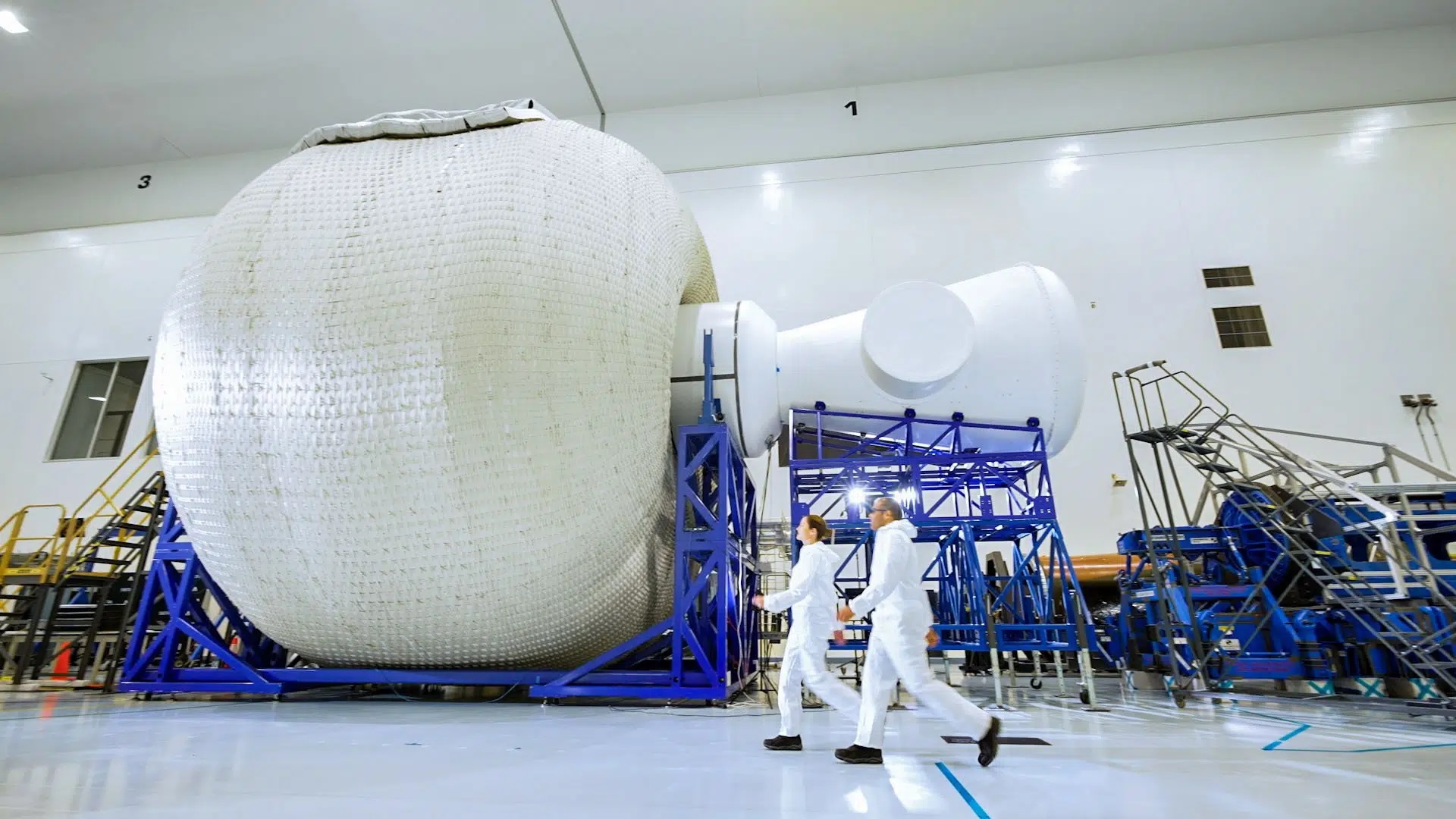We live in an age of renewed space exploration, colloquially known as Space Age 2.0. Unlike the previous one, this new space age is characterized by inter-agency cooperation and collaboration between space agencies and the commercial space industry (aka. NewSpace). In addition to sending crews back to the Moon and onto Mars, a major objective of the current space age is the commercialization of Low Earth Orbit (LEO). That means large constellations of satellites, debris mitigation, and plenty of commercial space stations.
To accommodate this commercial presence in LEO, Sierra Space has developed the Large Integrated Flexible Environment (LIFE) habitat, an inflatable module that can be integrated into future space stations. As part of the Commercial Low Earth Orbit Development Program, NASA, Sierra Space, and ILC Dover (the Delaware-based engineering manufacturing company) recently conducted a full-scale burst pressure test of their LIFE habitat. The test occurred at NASA’s Marshall Space Flight Center in Huntsville, Alabama, and was caught on video (see below).
Commercial space has become one of the fastest-growing businesses on Earth. In the past decade, the space economy has expanded by over 60% and is currently valued at around $400 billion. This is expected to grow considerably in the coming years as launch services increase, small satellites (CubeSats) become more affordable, and orbital stations are built. As the International Space Station (ISS) nears retirement, these commercial stations will provide opportunities for research and development, orbital manufacturing, and space tourism.
Sierra Space, the developer of the Dream Chaser reusable spaceplane, has demonstrated its commitment to the commercialization of LEO and the NewSpace economy. The first iteration of their inflatable habitat, LIFE 1.0, measures 6 meters (~20 feet) long and 9 meters (~30 feet) in diameter and can be launched using conventional rockets and inflates once in orbit. With a volume of 285 cubic meters (over 10,000 ft3), it can accommodate four astronauts, with additional room for science experiments, exercise equipment, and Sierra Space’s Astro Garden® plant-growing system.
The purpose of a burst pressure test is to gauge the structural tolerances of a component, be it a fuel tank or an inflatable module. The data gained from this test will assist engineers in simulating how the module will fare in the vacuum of space. Once development and testing are complete, the module will be used on commercial space stations like Orbital Reef, a collaborative effort between Blue Origin and Sierra Space. Future versions, like Life 2.0 and 3.0, will offer additional volume and be able to accommodate larger crews and more science operations.
According to their National Strategic Plan (released in 2022), one of NASA’s strategic goals is to develop a human spaceflight economy in collaboration with the NewSpace industry. In 2021, as part of a Commercial LEO Destinations (CLDs) project, NASA Space Act Agreements with three companies to design commercial space stations. This includes the Orbital Reef proposed by Blue Origin and Sierra Space, the Starlab space station by Nanoracks LLC, Voyager Space, and Airbus, and Northrop Grumman’s free flyer commercial space station.

As per NASA’s plan, creating a human spaceflight economy will ensure continued research and development in space while “allowing NASA to focus Government resources on the challenges of deep space exploration through Artemis.” Another goal is to maintain the legacy of the ISS long past its retirement:
“Since its inception, industry, academia, and our international partners have used the International Space Station (ISS) as a testbed for research and the development and maturation of state-of-the-art systems that increase access to space. NASA is supporting new space stations from which we and other customers can purchase services and stimulate the growth of commercial human spaceflight activities. As commercial LEO destinations become available, we intend to implement an orderly transition from current ISS operations to these new commercial destinations.”
Further Reading: Sierra Space

